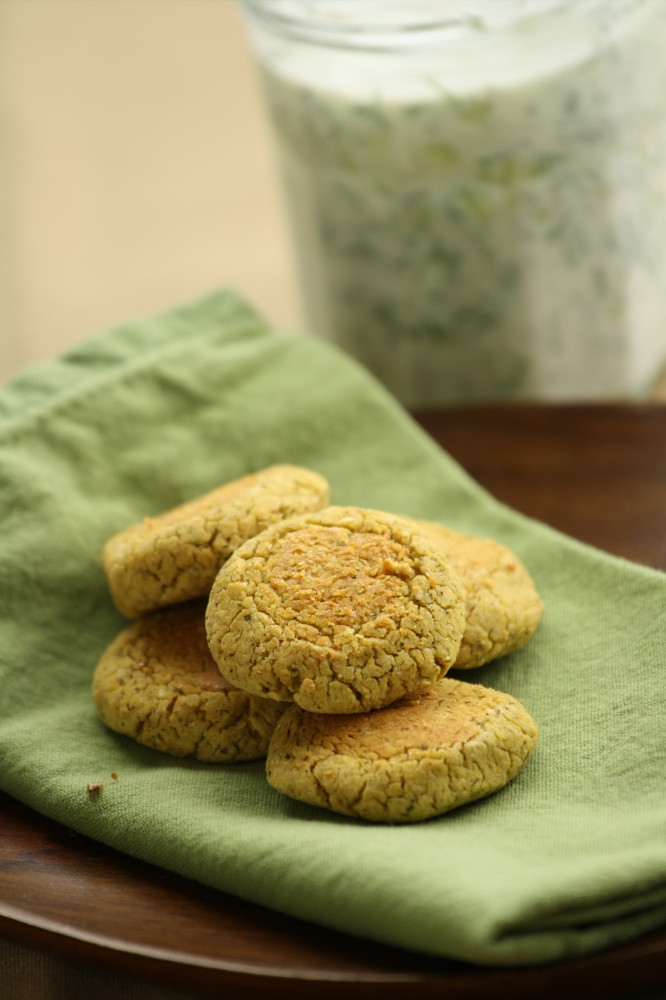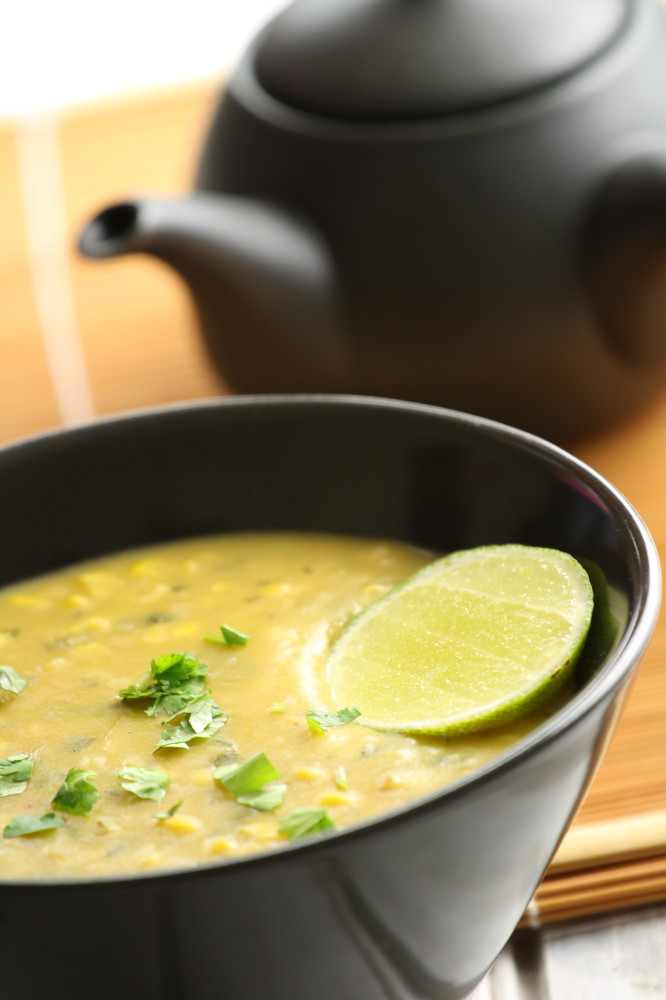Our review-one-cookbook-per-week extravaganza continues this week with Carol Fenster’s 125 Gluten-Free Vegetarian Recipes. If you’ve poked around the gluten-free world even just a little bit, you’ve almost certainly come across Carol. She’s about as big of a household name as you get in the gluten-free community. Teaching cooking classes, appearing at conferences, publishing popular cookbooks (including 1,000 Gluten-Free Recipes and 100 Best Gluten-Free Recipes). 125 Gluten-Free Vegetarian Recipes is her latest offering.
What’s so intriguing about this book is that Carol is an omnivore. She eats meat, but has written a vegetarian cookbook. We immediately connected with Carol’s perspective. We’re an omnivorous household, but one that—as of late—has been trying to eat smaller portions of meat, and eating meat less frequently. We purposefully try to incorporate vegetarian meals into our weekly food planning, and hoped that Carol’s new book would provide inspiration. (Unfortunately, the book contains no photos, so our inspiration was based solely on the titles of the dishes and their descriptions.)
The book has many divisions. For example, a section on Main Dishes is subdivided into pastas, breads (bread salad, bread pudding, pizza), polenta, stuffed with rice, rice on the bottom, casseroles, beans and lentils, and grains. We did find a few idiosyncrasies here or there…for instance, the Beans and Lentils subsection of the Main Dishes contains 6 recipes, none of which call for lentils.
Other major sections of the book include Vegetables, Soups and Stews, Appetizers, Breads, Breakfast, and Desserts. The inclusion of sections such as desserts (brownies, cookies) and breakfasts (waffles, pancakes) caught us off guard. We don’t normally think about vegetarian desserts, or vegetarian pancakes or waffles, because they tend to be so anyway. Ditto for the inclusion of recipes such as Bistro French Fries. Then again, they all are vegetarian recipes, so why not?
All of the recipes appear quite manageable. Nothing is overly complicated. A handful of recipes, in fact, perhaps verged on the too simple. Such as Parsley Buttered Pasta, which contains nothing but pasta, butter, and parsley, plus salt to taste. (This is not a criticism. We’re “guilty” of the same thing in our Artisanal Gluten-Free Cooking, which—in addition to more complex offerings—similarly contains a handful of super-simple recipes, such as our Grilled Asparagus, with olive oil, salt, pepper, and garlic powder, or our Jasmine Rice, which uses just rice, water, olive oil, and salt.)
If you know Carol’s work, you know that she has a flair for catering to multiple palates. I remember several years ago, when Kelli and I and Carol were presenters at the Gluten-Free Culinary Summit in Denver, Colorado. Carol demonstrated a recipe—a bread or muffin, I believe—that she called her Little Black Dress, a go-to piece that could be accessorized in myriad different ways. The same is true of the some of the recipes in 125 Gluten-Free Vegetarian Recipes. Case in point: Carol’s Thai Noodle Bowl. It reminded us of our own Asian-Inspired Noodle Bowl. The sauce had classic flavors—soy, ginger, garlic, sesame—and we used her recipe, combined with ingredients we had on hand in the house, to make a quick, easy, delicious lunch earlier this week. Her Thai Noodle Bowl was our Little Black Dress, that we fancied up as needed.
A section on grain salads—using wild rice, quinoa, amaranth, millet, sorghum—was compelling.
For this review, however, we felt pulled toward the book’s savory vegetarian entrees. We made a pasta dish, a falafel, a pizza, and a soup. And so, without further ado, on to the recipes…
For a pasta dish, we made Tofu Stroganoff. It had been a long time since either of us had had a stroganoff, vegetarian or otherwise. Gluten-free brown rice pasta, mushrooms, and tofu form the base of this dish, pulled together by a unique sauce. With cumin, mustard, GF soy sauce, tomato paste, dill, and sour cream, it was unlike any stroganoff we’ve ever had. It was rich and creamy, but the flavor combinations left us scratching our head. For us, it was not a successful dish.
That said, our girls loved this recipe. They devoured the food on their plates. If we would have let them, they would have licked their plates clean.
Perhaps this says something about the power of expectation. Kelli and I each had a very particular idea of stroganoff in our minds. When this dish didn’t match our pre-determined expectation, our taste buds revolted. But our girls, free from any expectation, ate this dish on its own merits. And by that measure, they voted with their mouths, showing hearty approval.
Next up was a classic Falafel. We hardly consider ourselves falafel experts, and from what we’ve read, it can be difficult and finicky to make well. It certainly was for us. A first attempt disintegrated while we tried to fry it in a pan, leaving us with a pan filled with lots of tiny falafel bits swimming in oil. A second time around, we baked our falafels to avoid the previous disaster. They had good flavor, though in part because of the baking, were dry and crumbly. The fried falafel bits had better flavor. If we could learn the knack of working with falafel dough, Carol’s pan-fried falafel patties would be great.
Carol’s recipe for Pizza followed. In short, this one was a real winner, though we tweaked her recipe in a few ways to get it there. Carol’s pizza sauce recipe calls for a can of tomato sauce, which you amend with some dried herbs, salt, and other goodies. However, because you’re using a store-bought brand of tomato sauce as a base, your pizza sauce’s sodium content is at the mercy of the tomato sauce base. The tomato sauce we bought happened to have plenty of salt on its own, so we omitted the extra salt called for in Carol’s recipe. Using it would have resulted in a too-salty sauce.
The other challenge we had was the consistency of the dough. Prepared according to the recipe, it was way too wet. Kelli had to add more than half a cup of extra flour to get it to a workable consistency as described in the recipe. That’s a lot of extra flour. Once Kelli made that tweak, however, this pizza crust was magic.
It browned nicely and had very good flavor. It was crunchy and cracker-like in places, with a complementary chewiness throughout. You could easily hold a slice in your hand. Fork and knife not needed here. We both agreed that Carol’s pizza crust was excellent, and the resulting pizza was very good.
Lastly we made the Thai Corn Chowder. This is an imaginative dish. It takes some classic Thai ingredients and flavors—basil, mint, cilantro, lime, coconut—and melds them with a potato-and-corn chowder. The cilantro came through strongest of the herbs, while the basil was not very present. For me, the mint coupled with red pepper flakes in the recipe resulted in a pleasant Icy Hot juxtaposition of sensations in the mouth. (Kelli didn’t get that same sense…)
We reduced our chowder (a step not called for in the recipe) to intensify the flavors, and added a touch of soy sauce for depth of flavor and salt. The lime (which is called for in the recipe) greatly brightened the flavors. Kelli and I agreed that full fat coconut milk—as opposed to the recipe’s light coconut milk—would give better richness of flavor.
Overall, this was a very successful dish that we enjoyed greatly.
Conclusion
In the interest of trying to quantify our subjective experience (as we did for The Gluten-Free Asian Kitchen and Simply Sugar and Gluten-Free), we’re using a five star ratings scale, with points earned as follows:
Layout and design = up to 1 star
Is the book appealing to the eye? Intuitive to navigate? Sensibly organized?
Photos = up to 1 star
Are there photos? Are they in color? How many photos are there? Are they good photos?
Recipe quality = up to 2 stars
Most importantly, how good is the food? Are recipes easy to follow? Do they deliver as promised?
Overall impression = up to 1 star
How well does the book achieve its vision?
And so, how does 125 Gluten-Free Vegetarian Recipes rate?
Layout and Design: 0.75 stars
Photos: 0 stars
Recipe Quality: 1.25 stars
Overall Impression: 0.75 stars
Rating: 2.75 out of 5 stars
As we’ve noted with other photo-less cookbooks, the addition of pictures would be a great enhancement that would boost its quantitative star rating. The book’s many sections, each with many more subsections, sometimes made navigating the recipes less than intuitive. Some recipes presented challenges (flavor on the stroganoff, texture on the falafel). Other recipes were very successful (pizza and Thai corn chowder). We found that the recipes were most successful when we made modifications…either to the preparation steps and/or the ingredients. At the end of the day, though, Carol has delivered another solid cookbook. Gluten-free vegetarians will find much to love in this book, and if—like us—you’re an omnivore looking for vegetarian inspiration, Carol’s book is a good resource.
– Pete




